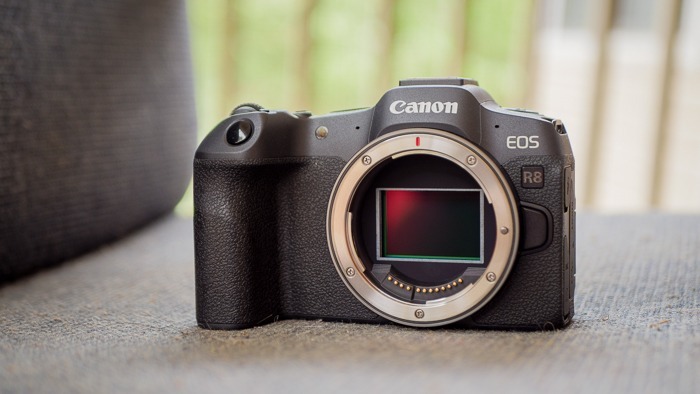Unfortunately, the first thing you notice picking up the R8 is its plastic construction. It straddles all around the camera's aluminum frame, making the lens mount the only bit of external metal on the body. I'm skeptical that this construction will hold up to as many bumps and scratches as the magnesium shells found on many other full-frame systems. The RF lens mount itself does feel plenty sturdy, so no worries there.
The body is especially thin and compact, even compared to other mirrorless cameras. With the lens off, it's almost pocket-able. And with the 50mm prime mounted, it goes snugly into my small shoulder bag. The R8 with battery weighs almost exactly one pound, so it could be great for light travel packing. Despite its thin, compact dimensions, the hand grip still feels very substantial. The adjustment dials are also well-placed for my fingers: something that the small Sony cameras never get quite right.
One of my biggest gripes about the R8 is its distinct lack of certain physical controls, like an EV button, ISO button, manual focus switch, or drive mode selector. The rear click wheel around the directional pad, which has been a long-time Canon staple, is also gone. With these things missing, things that should take one second to accomplish now take several seconds of digging through sub-menus, and those seconds could mean losing a perfect shot. Those things really separate it from more upscale cameras like the R6 or the Panasonic S5.
Canon EOS R8 Review: Budget Full Frame Power With Compromises - SlashGear
Read More


No comments:
Post a Comment